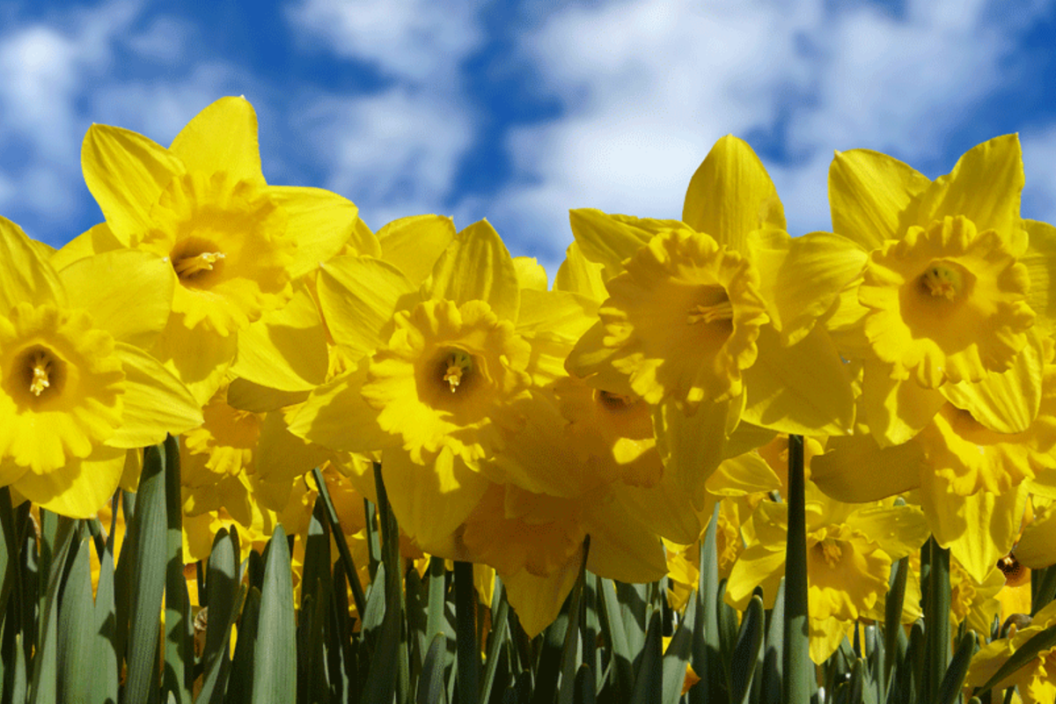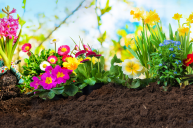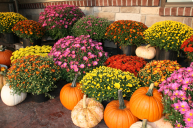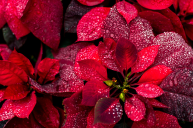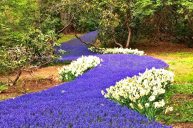Daffodils, also called jonquils or "ice follies," are the first brave flowers of spring. Their yellow buds break through the packed-down dirt of winter as if they were the Earth's internal sunshine trying to bring color back into our lives. They fight through the last drifts of snow, they remind us of Easter, and they are so easy to grow. They are simply irresistible.
Did you know though, that there is so much more to daffodils than meets the eye? These harbingers of spring were beloved by the Romans until they were lost to the sands of time. It was only in the early 17th century when they were rediscovered in the weeds by an Englishman. What else didn't you know about these blooms?
Here are 10 facts about daffodils that may be news to you.
1. Know Narcissus?
Daffodils are also known as Narcissus, and their botanical name is even Narcissus pseudonarcissus. This mythical word derives from classical Greek mythology where a beautiful youth became so entranced with his own reflection that he pined away for himself. As a punishment for his vanity, the gods turned him into this flower.
Additionally, the English call these cultivars the Lent Lily due to their long association with the fasting period of Christianity. So if you ever hear that name, just remember it's a daffodil.
2. Daffodils are springtime happiness.
Bestowing someone with a bouquet of daffodils is thought to bring happiness into the home. In Wales, you'll be even happier if you spot the first of these cheerful blooms.
According to legend, if you see the first daffodil, your next 12 months will be filled with wealth.
Plant daffodils in the fall to enjoy their early spring to late spring bloom time. Look out for these bright blooms during this time of year to spread happiness and gain wealth! If you miss the first one this year, they'll be back in full force next year, bringing renewed opportunities for prosperity.
3. It's the national flower of Wales.
In fact, the Welsh love this amaryllis family bloom so much that they have designated it their national flower.
If you dream of a field of this lovely flower, naturalizing daffodils is easy and results in many beautiful new blooms.
4. They're scientifically beneficial.
Scientists have identified a natural compound called narciclasine in daffodil bulbs.
This name doesn't just sound fancy, it turns out it does fancy things, like being beneficial in treating brain cancer, for instance.
If you live in USDA hardiness zones 3-8, you can have this fancy compound in your own yard!
5. Don't let your dog snack on daffodils.
These yellow spring-flowering beauties are unparalleled in their appeal for those new to horticulture. Part of this has to do with the natural pesticides that these blooms possess. Daffodil bulbs contain poisonous crystals which only certain insects can eat with impunity, making them deer resistant.
Similarly, squirrels will stay away from your carefully tended garden if you plant these flower bulbs. Just be careful not to let your dogs dig around the garden in mid spring, when these lovelies are in full bloom. They can, unfortunately, make your pets sick.
6. They're perfect for a Victorian bouquet.
In the Victorian era, daffodils represented chivalry making them a perfect bouquet for a gentleman to offer a lady.
Today, however, they represent hope. Maybe that's why they're regarded as the official 10th wedding anniversary flower? Simply plant your spring bulb daffodils in full sun or partial shade and well-draining soil to have your own bouquet of hope and romance come spring!
7. Are they unlucky flowers?
For generations, poultry farmers were convinced that this fragrant flower was unlucky and that planting daffodils would stop their hens from laying eggs.
Needless to say, they probably didn't have a lot of early springtime color in their homes as a result.
8. Always offer them in a bunch.
Don't ever present someone with a single daffodil.
Legend has it that offering a single bloom to someone foretells of their misfortune to come.
9. How many types of daffodils exist?
According to the Daffodil Data Bank, there are at least 25 different types of daffodils and up to 13,000 different hybrid varieties. Trumpet daffodils, specifically the "Dutch Master," are the classic, with white petals along with yellow and orange. Some other popular daffodil varieties are double daffodils, jonquilla daffodils, large cupped daffodils, petticoat daffodils and miniature daffodils.
10. Don't mix and match your flowers.
It may be tempting to make a spring garden bouquet of your daffodils, tulips and primroses. However, resist the urge to mix other flowers with daffodils until they have soaked in water for 24 hours. They contain a toxic sap which is harmful to other plants. After you soak them, however, you can add more variety. Just don't cut flowers after soaking, as this will re-release the toxin into your bouquet.
After you soak them, however, you can add more herbaceous variety. Just don't recut the stems. It will re-release the toxin into your bouquet.
Watch: Wild Edible Weeds in Your Backyard
This post was originally published on April 18, 2019.
